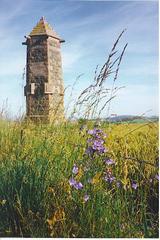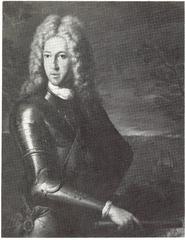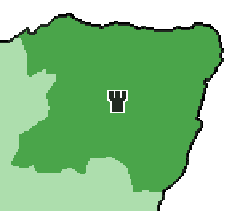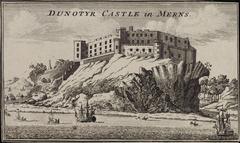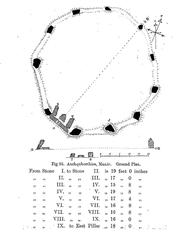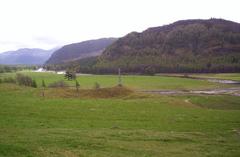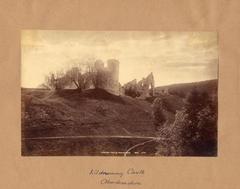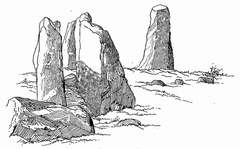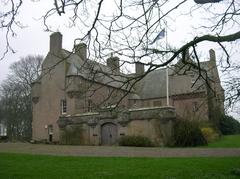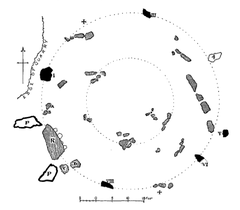
Braemar Castle Visiting Hours, Tickets & Historical Sites in Ballater, United Kingdom
Date: 04/07/2025
Introduction
Braemar Castle, situated amidst the dramatic landscapes of the Scottish Highlands, stands as a beacon of Scotland’s rich history, culture, and enduring architectural heritage. Constructed in 1628 by John Erskine, the 2nd Earl of Mar, this iconic 17th-century L-plan tower house, distinguished by its rare star-shaped curtain wall, has played a pivotal role in Scotland’s story—from its use as a strategic hunting lodge and its involvement in the Jacobite risings to Victorian royal patronage and its modern stewardship by the local community. Today, Braemar Castle is much more than a historic fortress; it is a vibrant cultural hub, offering guided tours, hosting the famed Braemar Highland Gathering, and welcoming visitors to explore its well-preserved interiors and fascinating artifacts (braemarscotland.co.uk, castlesinscotland.scot).
This guide provides comprehensive information on Braemar Castle’s visiting hours, ticket options, guided tours, accessibility, architectural highlights, and nearby attractions. Whether you are a history enthusiast, cultural explorer, or planning a family trip, Braemar Castle offers an immersive experience into Scotland’s storied past and vibrant present (Clan Farquharson UK, Braemar Scotland Events, braemarcastle.co.uk).
Historical Overview
Early Origins and Strategic Importance
Braemar has long been a crossroads of Scottish history, where key hill passes converge. The castle’s site has been significant since ancient times, with early settlements and the first church in Scotland dedicated to St Andrew believed to have stood here. Royal patronage dates back to the 10th century, with legends of King Kenneth MacAlpin and King Malcolm Canmore hunting in the local forests and introducing competitive hill racing, a tradition that endures in the Braemar Gathering (braemarscotland.co.uk).
Construction and Early Use (1628–1689)
John Erskine, 2nd Earl of Mar, built Braemar Castle in 1628, replacing the ruined Kindrochit Castle. The new L-plan tower house served as both a hunting lodge and a fortified stronghold, asserting control over the region and defending against rival clans. Its robust defensive features, including the curtain wall with gun slits and an iron yett, reflected the turbulent times (aboutaberdeen.com).
Jacobite Turmoil and Destruction (1689–1746)
The castle was set ablaze in 1689 by John Farquharson, the “Black Colonel of Inverey,” to prevent government use during the Jacobite risings. It remained a ruin for decades, passing to the Farquharson family after the 1715 Jacobite Rising, when the Earl of Mar fled and his lands were forfeited (visitballater.com).
Hanoverian Garrison and Restoration (1746–1831)
After the 1745 Jacobite Rising, the British government leased Braemar Castle as a military garrison. John Adam, Master Mason, oversaw its restoration, and Redcoat troops left their graffiti throughout the castle, some of which remains today. The military presence persisted until 1797, after which the castle was returned to the Farquharsons (visitballater.com, aboutaberdeen.com).
Victorian Era and Royal Connections (1831–1982)
Restored as a family home in 1831, Braemar Castle became a social and royal venue. Queen Victoria attended gatherings here, elevating the region’s status. The influx of Victorian tourists transformed Braemar and contributed to the decline of Gaelic in favor of English (visitballater.com, braemarscotland.co.uk).
Modern Era: Community Stewardship (1982–Present)
The Farquharson family lived in the castle until 1982. Since 2005, Braemar Community Ltd has managed the castle under a long-term lease, using proceeds and donations for restoration and maintenance. The castle reopened to the public in 2008 and continues to be enhanced for accessibility and visitor experience (aboutaberdeen.com, braemarcastle.co.uk).
Architectural Features and Historical Artifacts
Braemar Castle’s architecture is both defensive and elegant. Its star-shaped curtain wall and L-plan tower house are unique in Scotland, designed to withstand artillery and offer strategic defense (castlesinscotland.scot). Interior highlights include:
- Dining Room, Drawing Room, Rose Room, Four Poster Bedroom, Military Room, Costume Room, Toy Room, and Curio Room
- Military graffiti etched by government troops in the 18th century
- Artifacts: A piece of plaid worn by Prince Charles Edward Stuart at Culloden, a blue topaz Cairngorm stone, and a Bronze Age sword from Gairnshiel (aboutaberdeen.com)
Visiting Braemar Castle
Visiting Hours
- April–October:
- Monday–Saturday: 10:00 AM – 5:00 PM
- Sunday: 12:00 PM – 5:00 PM
Check the official website for updates and seasonal variations.
Ticket Information
- Adults: £8.50
- Seniors (65+): £7.00
- Children (5–16): £4.50
- Family Ticket (2 adults + up to 3 children): £20.00
Tickets can be purchased onsite or online.
Guided Tours and Events
Daily guided tours, led by knowledgeable volunteers, offer deep insights into the castle’s history. Special events include:
- Historical reenactments during the Braemar Gathering
- Educational workshops and seasonal festivities
Check the Braemar Castle events page for details.
Accessibility
The castle grounds and select rooms are wheelchair accessible. Due to the building’s historic nature, some upper floors are not accessible. Assistance dogs are welcome. Visitors with specific needs should contact staff in advance.
Nearby Attractions
- Braemar Village: Shops, cafes, and the Gathering Hall
- Cairngorms National Park: Hiking, wildlife, and scenic drives
- Balmoral Castle: The Royal Family’s Scottish residence
Braemar Castle’s Cultural Significance
A Living Symbol of Highland Heritage
Braemar Castle is a symbol of Highland culture and the legacy of Clan Farquharson. Its history as a Jacobite stronghold and clan seat is preserved and interpreted through guided tours and displays (SpottingHistory, Clan Farquharson UK). The “Raising the Standard” project supports ongoing restoration and community engagement.
Royal Connections and Traditions
Braemar Castle’s ties to the British Royal Family are longstanding, with Queen Victoria and later monarchs attending the annual Braemar Highland Gathering. This tradition continues, reinforcing the castle’s role in promoting Scottish culture (Wayfaring Kiwi).
Major Events and Community Activities
The Braemar Highland Gathering
Held annually in September, the Braemar Gathering features Highland games, music, dance, and the Parade of the Clans, drawing thousands and attracting royal guests (Braemar Scotland Events).
Folk Festivals and Educational Initiatives
The castle and village host folk festivals, ceilidhs, and junior Highland games, fostering community spirit and cultural continuity. Educational programs and interactive exhibits illuminate the region’s history (VisitAberdeenshire).
Practical Visitor Information
Getting There
Located in the village of Braemar, about 50 miles west of Aberdeen. Accessible via the A93, with free onsite parking. Public transport is limited—consider taxis or organized tours.
On-Site Facilities
- Toilets, a shop with souvenirs and crafts, and picnic spots.
- Light refreshments may be available; visitors can bring their own snacks.
Photography and Drones
Personal photography is allowed; drone use requires prior permission (castle’s drone policy).
Frequently Asked Questions (FAQ)
Q: What are the opening hours?
A: April–October: Mon–Sat 10:00–17:00, Sun 12:00–17:00.
Q: How can I buy tickets?
A: Online or at the entrance; discounts available for families, seniors, and children.
Q: Is the castle accessible?
A: The grounds and some rooms are accessible; contact in advance for requirements.
Q: Are guided tours available?
A: Yes, daily tours are led by volunteers.
Q: Can I bring children?
A: Yes—family activities and treasure hunts are available.
Q: Is photography allowed?
A: Yes, in most areas; drone use requires permission.
Q: Is there parking?
A: Yes, free on-site parking.
Tips for Your Visit
- Dress for cool interiors and uneven surfaces.
- Book tickets early, especially for special events.
- Explore Braemar village and nearby attractions for a full Highland experience.
Visuals and Media
High-quality images and virtual tours are available on the official website.


Summary
Braemar Castle offers a unique blend of Scottish history, culture, and architectural grandeur. Its rare star-shaped curtain wall, Jacobite connections, royal associations, and community stewardship make it an essential destination in the Highlands. Guided tours, family-friendly activities, and proximity to Royal Deeside and the Cairngorms National Park ensure a memorable visit. For up-to-date information, tickets, and event details, visit the official Braemar Castle website.
References and Further Reading
- Braemar Castle History and Events (braemarscotland.co.uk)
- Braemar Castle History (aboutaberdeen.com)
- Braemar Castle Visitor Information (visitballater.com)
- Braemar Castle Official Website (braemarcastle.co.uk)
- Braemar Castle Architectural Details (castlesinscotland.scot)
- Braemar Castle Overview (castlepedia.org)
- Braemar Castle Cultural Significance (clanfarquharsonuk.com)
- Braemar Highland Gathering Guide (wayfaringkiwi.com)
- Braemar Castle Visitor Guide (revisitinghistory.com)
- Braemar Castle Visitor Experience (chasingthelongroad.com)
- Braemar Castle and Aberdeenshire Attractions (visitabdn.com)
For more on Scottish castles and Aberdeenshire’s historical attractions, explore our related articles or download the Audiala app for interactive tours and up-to-date visitor information.


